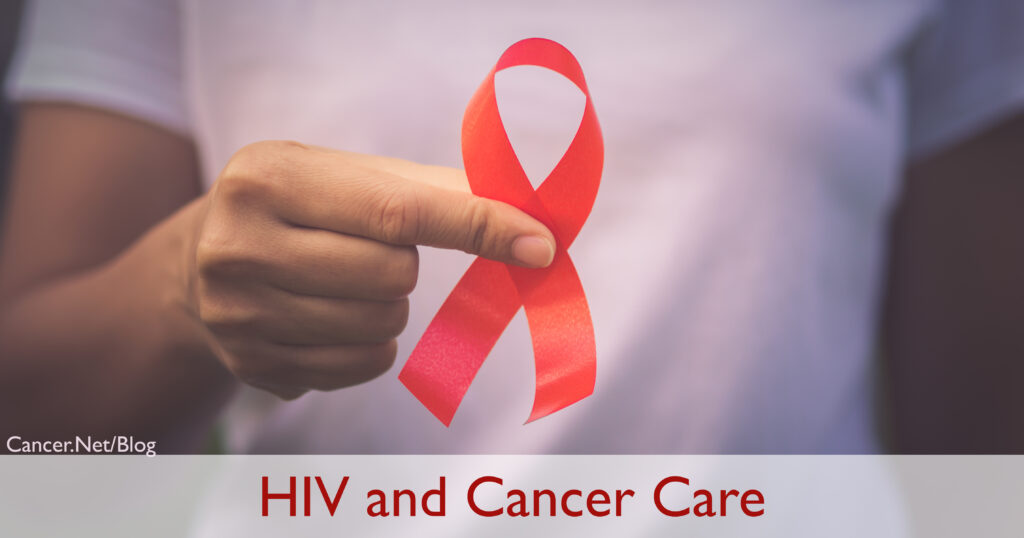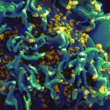HIV Cancer Risk
Beyond the Virus: Comprehending Cancers Associated with HIV
Even though the introduction of extremely efficient antiretroviral medication (ART) has revolutionized HIV treatment, people living with HIV continue to have a higher risk of developing several types of cancer. We refer to these tumors as HIV-associated malignancies. This blog post examines three prevalent cancers linked to HIV: non-Hodgkin lymphoma (NHL), cervical cancer, and Kaposi’s sarcoma.
Table of Contents

A Weakened Defense: HIV’s Increasing Risk of Cancer
HIV Cancer Risk
HIV targets CD4 cells in particular, which are essential immune system cells that fend against infections and aberrant cell proliferation. Certain malignancies are more likely to develop in an environment where the immune system is compromised due to a low CD4 cell count.
- Decreased Immune Surveillance: In order to prevent aberrant cells from growing into tumors, healthy immune systems continuously search for and destroy them. HIV patients may not be able to identify and eradicate these precancerous cells due to weakened immune systems.
- Chronic Inflammation: The HIV virus frequently causes the body to experience chronic inflammation. This persistent inflammatory state has the potential to harm healthy cells and promote the growth of tumors.
- Co-infections: Some co-infections, such as hepatitis C virus (HCV) and human papillomavirus (HPV), can raise the risk of some malignancies linked to HIV.
Kaposi’s Sarcoma: A Specific Type of Vascular Tumor
HIV Cancer Risk
A vascular tumor that can damage the skin, internal organs, and mucous membranes (the lining of bodily cavities) is called Kaposi’s sarcoma (KS). It usually appears on the face or legs as reddish-purple nodules or patches on the skin.
- etiology: Human Herpesvirus-8 (HHV-8) infection is linked to KS, while the precise etiology is unknown.
- Symptoms: Depending on where the tumor is located, KS symptoms can change. The most typical appearance of KS is skin lesions, but if it is inside, it can potentially result in organ malfunction or internal hemorrhage.
- Treatment: KS patients have several treatment choices based on the location and intensity of their tumors. Surgery, radiation therapy, and drugs like immunotherapy or chemotherapy are examples of treatment techniques.
Non-Hodgkin Lymphoma: A Varying Category of Malignancies
HIV Cancer Risk
The word “non-Hodgkin lymphoma” (NHL) refers to a broad category of malignancies that start in the lymphatic system, a network of organs and capillaries essential to immune function. HIV-positive people are more likely to acquire NHL, especially high-grade aggressive lymphomas.
- NHL symptoms: include fever, night sweats, swollen lymph nodes, and unexplained weight loss. Symptoms can also be nonspecific.
- Diagnosis: A variety of investigations, including blood tests, imaging scans, and lymph node biopsies, are used to make the diagnosis.
- Treatment: Chemotherapy is the mainstay of treatment for NHL. It is frequently combined with radiation therapy or stem cell transplantation.
Preventing cervical cancer is essential.
HIV Cancer Risk
Cancer of the cervix, or lower section of the uterus, is referred to as cervical cancer. Cervical cancer is primarily associated with HPV infection. HIV infection, however, can hasten the development of precancerous lesions associated with HPV into aggressive cervical cancer.
- Prevention: The best way to avoid cervical cancer is to get vaccinated against HPV. For the early identification and management of precancerous lesions, routine cervical cancer screening with Pap smears and HPV testing is still essential.
- Treatment: Depending on the disease’s stage, cervical cancer may require radiation therapy, chemotherapy, or surgery.
Reducing Cancer Risk While Living with HIV
HIV Cancer Risk
Even while there is always a chance of these cancers, there are steps that persons living with HIV can take to lower their risk:
- Maintain a Healthy Lifestyle: A strong immune system is supported by a nutritious diet, frequent exercise, and enough sleep.
- Adherence to ART: Sustaining a robust immune system and lowering the risk of HIV-related cancers depend on effective ART.
- Vaccinations: Make sure you are current on your shots, including the HPV vaccine.
- Frequent Cancer Screenings: Early detection and better prognoses are achieved through routine screenings for cervical cancer, anal cancer, and other possible HIV-associated cancers.
HIV Cancer Risk
Although concerning, HIV-related cancers are not always fatal. People living with HIV can greatly lower their chance of developing cancer and lead long, healthy lives by following approved cancer screening recommendations, adhering to ART, and keeping a healthy lifestyle.
HIV Cancer Risk
Always keep lines of communication open with your healthcare provider. Talk about your cancer risk factors and make an appointment for the necessary screenings. The prognosis for the majority of malignancies is greatly improved by early detection and treatment.


